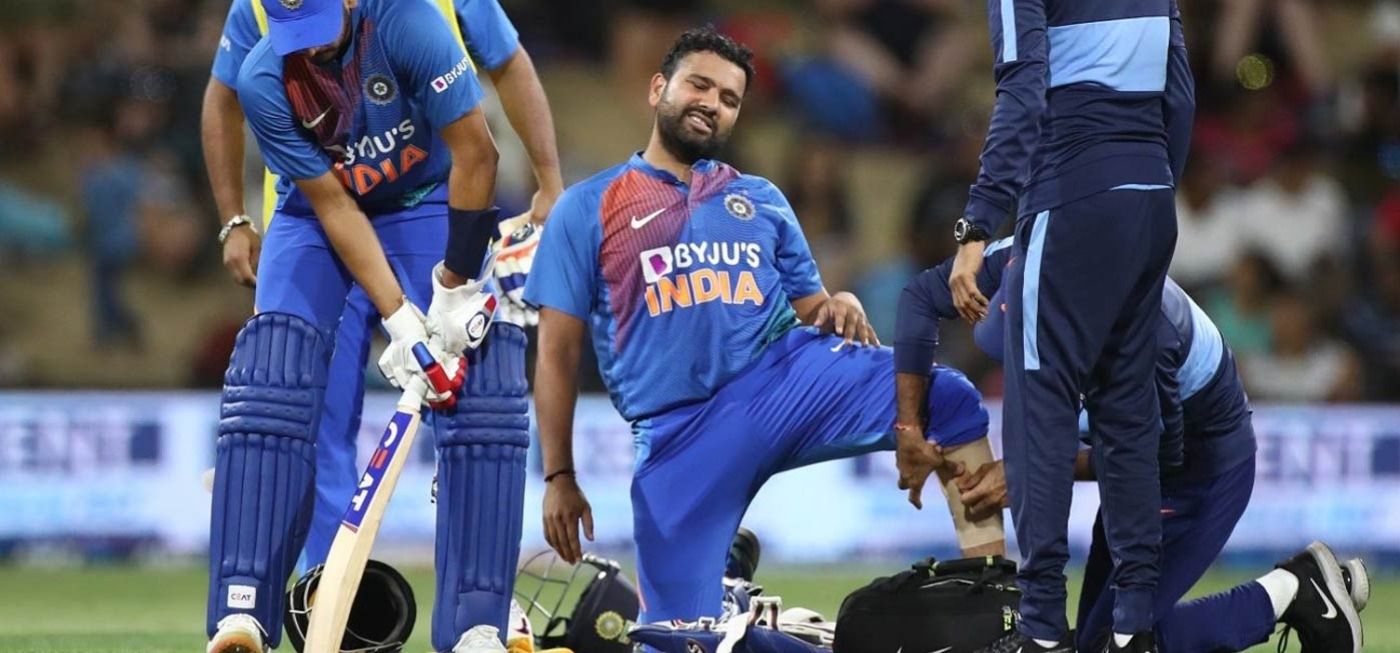The concept of leaving in cricket is a crucial skill that contributes to the overall strategy of the game. Leaving refers to the act of not playing at a delivery from the bowler, allowing the ball to pass by without attempting to hit it.
It requires precision and decision-making, as players must judge the line and length of the delivery to determine whether it poses a threat to their wicket.
Leaving can be used as a defensive strategy to protect the wicket and avoid getting out. By leaving deliveries that are outside the off-stump or outside the line of the stumps, batsmen can reduce the risk of edging the ball to the wicketkeeper or slips fielders. This allows them to conserve their energy and focus on scoring runs when the opportunity arises.
However, leaving can also be used as an offensive tactic to put pressure on the bowler. By leaving deliveries that are on a good length but not threatening the stumps, batsmen can frustrate the bowler and force them to change their line or length. This can disrupt the bowler’s rhythm and create scoring opportunities for the batsman.
Despite its importance, leaving can be challenging and mistakes can be costly. Misjudging the line or length of a delivery can result in the batsman being bowled or caught behind, leading to a dismissal.
Additionally, leaving too many deliveries can result in a lack of scoring opportunities, putting pressure on the batting team to make up for lost time.
In conclusion, leaving is a skill that requires precision and decision-making in cricket. It contributes to the overall strategy of the game by protecting the wicket and creating scoring opportunities.
However, it can also be challenging and mistakes can lead to dismissals or a lack of scoring opportunities. By understanding the various strategies and challenges involved in leaving, players can improve their game and contribute to their team’s success.
Key Takeaways
- There are different types of leaves in cricket, such as off-side leave, leg-side leave, front-foot leave, back-foot leave, and charging down leave.
- Manipulation tactics, such as footwork, body positioning, shot selection, and scoring rate, can be used to influence the bowler's delivery and strategy.
- Leaves can have a psychological impact on the bowler by disrupting their rhythm and confidence, and bowlers need to manage pressure and build mental resilience.
- Common mistakes in leaving include misjudging the line and length of the ball, failing to move the feet correctly, and not maintaining focus on the delivery. Mastering the art of leaving requires good judgment, proper footwork, and unwavering focus.
Understanding the Concept of Leaving in Cricket
The concept of leaving in cricket refers to the act of a batsman intentionally avoiding playing at a delivery that is bowled outside their ‘off stump’ and does not pose any threat to their wicket.
Mastering techniques related to leaving requires a combination of mental preparation and technical skill. It is crucial for a batsman to have a clear understanding of their off stump and the line where they need to defend.
This knowledge allows them to make informed decisions about when it is appropriate to leave the ball. Mental preparation plays an equally important role, as it enables the batsman to remain focused and disciplined in deciding which deliveries to play and which ones to leave.
To master the art of leaving in cricket, a batsman must develop the ability to judge the line and length of each delivery accurately. This requires intense practice and experience, as well as keen observation skills.
Additionally, having good footwork is essential for moving quickly into position or out of harm’s way when deciding whether or not to play at a delivery.
Transitioning into the subsequent section on mastering the art of leaving in cricket, it becomes evident that successfully executing this technique involves more than just physical skill; it requires mental strength and strategic decision-making.
Mastering the Art of Leaving in Cricket
Developing patience and discipline is crucial for a cricketer to master the art of leaving. By honing these qualities, a player can resist the temptation to play at deliveries that are not within their scoring range, ultimately avoiding unnecessary dismissals.
Furthermore, reading the bowler and judging the delivery accurately allows a batsman to make informed decisions about which balls to leave based on factors such as line, length, and movement.
Developing Patience and Discipline
Patience and discipline can be cultivated through the practice of leaving the ball in cricket. By choosing not to play at a delivery that is outside the off-stump, batsmen develop patience as they resist the urge to go for a scoring opportunity. This requires mental strength to maintain focus and remain disciplined in their shot selection.
Developing this skill allows batsmen to assess each delivery carefully, enhancing their ability to judge which balls should be played and which should be left.
The act of leaving the ball also helps them understand their own strengths and weaknesses, as they learn to differentiate between deliveries that are within their range and those that pose a greater challenge.
This process provides valuable insights into reading the bowler’s intentions and judging the delivery accurately without compromising on patience or discipline.
Reading the Bowler and Judging the Delivery
To effectively read the bowler and judge the delivery, batsmen must carefully observe the line, length, and pace of each ball. Judging the bowler’s speed is crucial in determining how much time a batsman has to react.
By closely observing the release point and arm action of the bowler, along with previous deliveries, a batsman can anticipate the line and length of the upcoming ball. This allows them to make quick decisions regarding their shot selection or whether to leave the ball altogether.
Anticipating the line and length early also gives batsmen an advantage in terms of footwork positioning, enabling them to adjust their stance accordingly.
The ability to accurately read a bowler’s intentions enhances a batsman’s chances of playing successful shots or executing well-timed leave shots while maintaining solid footwork.
Transitioning into practicing leave shots and footwork without using ‘step’, it is important for batsmen to hone these skills through dedicated practice sessions.
Practicing Leave Shots and Footwork
Enhancing footwork and practicing the art of leaving the ball require dedicated and focused training sessions. Practicing leave shots is an essential skill for batsmen in cricket, enabling them to make a split-second decision on whether to play or leave the ball based on its line, length, and movement.
This technique involves deliberately refraining from playing at deliveries that are not threatening or outside the batsman’s scoring area.
Alongside practicing leave shots, improving footwork is crucial as it allows batsmen to efficiently move their feet into position for optimal shot selection or leaving the ball.
Effective footwork enables quicker reactions, better balance, and smoother weight transfer while leaving the ball.
By honing these skills through rigorous practice and coaching, batsmen can enhance their ability to make informed decisions during matches.
Transition: Developing proficiency in practicing leave shots and improving footwork lays a strong foundation for implementing strategic strategies and tactics involving leaving in cricket without compromising scoring opportunities.
Strategies and Tactics Involving Leaving in Cricket
This discussion will focus on the strategies and tactics involving leaving in cricket, specifically examining the use of leave as a defensive strategy, manipulating the bowler’s line and length, and the psychological impact it has on the bowler.
The art of leaving plays a crucial role in a batsman’s ability to defend against deliveries that are deemed too risky or outside their scoring zone.
By strategically leaving balls, batsmen can not only frustrate the bowler but also force them to adjust their line and length, potentially opening up scoring opportunities.
Additionally, this tactic can have a significant psychological impact on the bowler by undermining their confidence and causing them to doubt their bowling strategy.
Using Leave as a Defensive Strategy
One common defensive strategy in cricket involves the strategic use of leave. This technique allows the batsman to assess the risk involved in playing a particular delivery and make a decision not to play it, thereby minimizing the chances of getting out.
By leaving the ball, batsmen aim to manipulate the bowler’s line and length, forcing them to adjust their strategy and potentially make mistakes.
Through careful observation and analysis, players can determine which deliveries are safe to leave based on factors such as pitch conditions, bowler’s skill level, and match situation. The table below illustrates different types of leaves used in cricket:
| Type of Leave | Description |
|---|---|
| Off-Side Leave | Leaving a delivery outside off-stump |
| Leg-Side Leave | Leaving a delivery down leg-side |
| Front-Foot Leave | Deciding not to play a ball pitched on or outside off-stump |
| Back-Foot Leave | Choosing not to play a short-pitched delivery aimed at body/head |
| Charging Down Leave | Moving forward aggressively before deciding not to play |
By effectively using these defensive techniques and assessing the risks associated with each delivery, batsmen can gain an advantage over the bowlers by manipulating their line and length.
Transitioning into the subsequent section about ‘manipulating the bowler’s line and length,’ batsmen strategically employ various tactics that influence how bowlers deliver each ball without directly stepping towards them.
Manipulating the Bowler’s Line and Length
Manipulating the bowler’s line and length requires strategic tactics that influence the delivery of each ball without directly stepping towards them.
To effectively manipulate the bowler’s line and length, batsmen employ various techniques to gain an advantage. These strategies involve a combination of skill, observation, and anticipation.
Here are four key ways in which batsmen manipulate the bowler’s line and length:
- Footwork: By moving forward or backward on the crease, batsmen can alter their position relative to the stumps, forcing the bowler to adjust their line accordingly.
- Body positioning: Batsmen use their body angle to manipulate where they want the ball to be delivered, influencing both line and length.
- Shot selection: The choice of shot played by a batsman can also dictate where a bowler aims his deliveries.
- Scoring rate: By rotating strike or hitting boundaries consistently, batsmen put pressure on bowlers, forcing them to change their strategy.
Understanding these tactics allows batsmen to judge the delivery accurately and make informed decisions regarding shot selection.
This ability has a significant psychological impact on the bowler as it disrupts their rhythm and confidence without overtly challenging them.
Psychological Impact on the Bowler
The psychological impact on the bowler is significant, as it disrupts their rhythm and confidence without overtly challenging them.
Managing pressure and building mental resilience are crucial skills for a bowler to withstand the psychological effects of the game.
To understand these impacts, let’s examine a table showcasing some common psychological challenges faced by bowlers:
| Psychological Challenges | Impact on Bowler |
|---|---|
| Fear of Failure | Decreased confidence, hesitant bowling |
| Performance Anxiety | Inability to focus, loss of concentration |
| Criticism | Self-doubt, reduced motivation |
Common Mistakes and Challenges in Leaving
Common mistakes and challenges in leaving during a cricket match include misjudging the line and length of the ball, failing to move the feet correctly, and not maintaining focus on the delivery.
Leaving is a crucial skill in cricket as it allows batsmen to avoid getting out when they are unable or unwilling to play at a particular delivery. However, leaving can be a difficult art to master due to various factors.
Some common mistakes that batsmen make when leaving include misjudging the line and length of the ball. This can result in either playing at deliveries that should have been left alone or leaving balls that would have hit the stumps.
Another challenge is failing to move their feet correctly while leaving. This can lead to imbalance and lack of control, making it harder for them to execute an effective leave.
Moreover, not maintaining focus on the delivery is another challenge faced by batsmen when leaving. Lack of concentration can cause them to misjudge the trajectory of the ball and make incorrect decisions regarding whether or not to leave it.
To summarize, successful leaving requires good judgement of line and length, proper footwork, and unwavering focus on each delivery.
Batsmen must continuously practice these skills in order to minimize common mistakes and overcome challenges associated with leaving in cricket matches.
Final Thoughts on Leave
In conclusion, the concept of leaving in cricket is an intricate skill that requires meticulous mastery. By understanding the nuances and strategies involved, players can effectively navigate the challenges associated with leaving.
However, it is crucial to be mindful of common mistakes that may hinder success in this aspect of the game.
Overall, honing the art of leaving can greatly enhance a player’s performance and contribute to their overall success on the cricket field.
Frequently Asked Questions: Leave
What are the consequences of not playing a shot in cricket?
The consequences of not playing a shot in cricket can be significant. Poor shot selection can result in the loss of wickets, which reduces the team's score and puts pressure on subsequent batsmen. Therefore, it is vital for players to carefully consider their shot choices during a match.
How can a player determine whether to leave or play a delivery?
When judging the line and length of a delivery in cricket, players consider key factors such as the movement of the ball, pitch conditions, and their own batting technique. This helps them decide whether to leave or play a delivery.
Are there any specific techniques to master the art of leaving in cricket?
Leaving techniques in cricket require a great deal of patience and discipline. Players must possess the ability to judge the line, length, and trajectory of the ball accurately to make an informed decision about leaving or playing a delivery.
What are the best strategies to employ when leaving deliveries in cricket?
When leaving deliveries in cricket, it is important to consider the psychological aspects of the batsman's mindset and employ strategies that counter swing. Analyzing the bowler's line and length, anticipating movement, and maintaining a strong defensive technique are essential in executing successful leaves.
What are some common mistakes made by players while leaving deliveries in cricket and how can they be avoided?
Mistakes in leaving deliveries in cricket often stem from poor footwork. Players may misjudge the line and length, resulting in unnecessary dismissals. Improving footwork through practice and focus can help avoid such errors.











